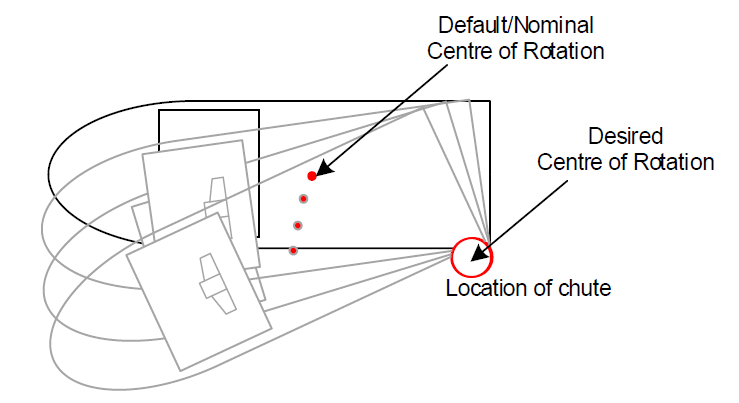Incorrect entry of DP Rotation Point offsets
1 Overview
A vessel was engaged in Driving and ROV work over a live manifold. During ROV dive the vehicle had taken receipt of a hot stab connected to a recently deployed downline with the intention of connecting the downline to the manifold on the seabed to enable de-watering of the pipeline.
Due to rising currents the vessel was required to change heading, with a move agreed between Bridge and Dive Control to pivot around the over boarding chute housing the downline deployed to the worksite, such to minimise disruptions to the works being carried out subsea.
The move required was a heading change of around 30 degrees with the chute location known to be approximately: 25m Astern and 11.5m Port from centre ship. An input error from the operator occurred and the DP system was instructed to rotate 30 degrees on a point 25m Forward and 11.5m Port from centre ship.
During the move the ROV reported that it was losing position and an ‘All Stop’ was called to the move. It was then discovered by the DP Operator that the input error had occurred, and the vessel was returned to its desired position prior to re-commencing the work scope.

Figure 4‑1 Desired heading change Move

Figure 4‑2 Actual heading change/vessel move
2 Observations
- ASOG/CAMO was in operation at the time of incident.
- At no point did vessel lose control, DP system (correctly) responded to input command (which was incorrect)
- the DP operator stopped the move immediately upon becoming aware.
- Vessel operating in DP Class 3 configuration. At no point was DP compromised or at risk (according to duty holder).
- Once the move was stopped, the correct inputs were entered, and vessel moved to the desired location and heading.
- The principles of Bridge Resource Management, including cross checking, have been reinforced with the DPOs. The CAMO/ASOG and Master’s Standing Orders now include this.
- New Master Standing Orders for DP Operations have been rolled out. These emphasis cross-checking, DPO teamwork and focus during operations.
The following IMCA Guidance would be relevant to this case study:
IMCA M117 The Training and experience of key DP personnel
IMCA M220 Guidance on operational planning
DP Event
Published: 18 September 2023
Download: IMCA DPE 03/23
Submit a Report
The following case studies and observations have been compiled from information received by IMCA. All vessel, client, and operational data has been removed from the narrative to ensure anonymity.
Case studies are not intended as guidance on the safe conduct of operations, but rather to assist vessel managers, DP operators and DP technical crew in appropriately determining how to safely conduct their own operations. Any queries should be directed to IMCA at [email protected]. Members and non-members alike are welcome to contact IMCA if they have experienced DP events which can be shared anonymously with the DP industry.
IMCA’s store terms and conditions (https://www.imca-int.com/legal-notices/terms/) apply to all downloads from IMCA’s website, including this document.
IMCA makes every effort to ensure the accuracy and reliability of the data contained in the documents it publishes, but IMCA shall not be liable for any guidance and/or recommendation and/or statement herein contained. The information contained in this document does not fulfil or replace any individual’s or Member's legal, regulatory or other duties or obligations in respect of their operations. Individuals and Members remain solely responsible for the safe, lawful and proper conduct of their operations.
